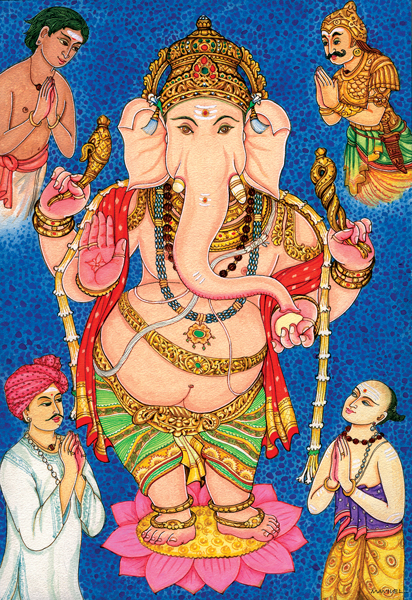 Hindus believe that the death of a human being only extinguishes the bodily form of existence as the soul reincarnates in another life form. The exercise of Sanatana Dharma (the central theological system) is to gain the favor of the powers of creation so that the soul finds a happier and an elevated existence in its next life-episode. A failure to live a virtuous life would demote the human soul to find the body of a lesser animal in its next life. These reincarnations are not meant to go on in never-ending cycles. The purpose of a Hindu’s life is to aspire for the ultimate experience of Absolute Reality, through the achievement of which there shall be no more re-births and the soul merges into this ultimate reality (Sharma, 1996). This liberation from sensual realities to the absolute reality is known as Moksha.. A human being has it within his ability to attain Moksha by applying the principles suggested by the scriptures. Whereas an animal, lacking in powers of higher cognition and control of the self cannot ever achieve Moksha. This makes it imperative for a Hindu to utilize the precious occasion of human life toward reaching the ultimate goal. It also explains why Hindus desire liberation from earthly existence. Moksha is a core concept in Hinduism and all other philosophical discourses in the Vedas and Upanishads revolve around this core. To attain Moksha, a Hindu subject embraces principles such as Bhakti Yoga in his daily life. Application of Bhakti Yoga is said to help the individual overcome hurdles and challenges (also known as Karma) in his march toward enlightenment (Sharma, 1996).
Hindus believe that the death of a human being only extinguishes the bodily form of existence as the soul reincarnates in another life form. The exercise of Sanatana Dharma (the central theological system) is to gain the favor of the powers of creation so that the soul finds a happier and an elevated existence in its next life-episode. A failure to live a virtuous life would demote the human soul to find the body of a lesser animal in its next life. These reincarnations are not meant to go on in never-ending cycles. The purpose of a Hindu’s life is to aspire for the ultimate experience of Absolute Reality, through the achievement of which there shall be no more re-births and the soul merges into this ultimate reality (Sharma, 1996). This liberation from sensual realities to the absolute reality is known as Moksha.. A human being has it within his ability to attain Moksha by applying the principles suggested by the scriptures. Whereas an animal, lacking in powers of higher cognition and control of the self cannot ever achieve Moksha. This makes it imperative for a Hindu to utilize the precious occasion of human life toward reaching the ultimate goal. It also explains why Hindus desire liberation from earthly existence. Moksha is a core concept in Hinduism and all other philosophical discourses in the Vedas and Upanishads revolve around this core. To attain Moksha, a Hindu subject embraces principles such as Bhakti Yoga in his daily life. Application of Bhakti Yoga is said to help the individual overcome hurdles and challenges (also known as Karma) in his march toward enlightenment (Sharma, 1996).
References:
Sharma, Arvind, (1996), On the distinction between karma and rebirth in Hinduism.. Asian Philosophy, Mar1996, Vol. 6 Issue 1, p29, 7p;
Van Horn, Gavin, (2006), Hindu Traditions and Nature: Survey Article., Environment Culture Religion, Vol. 10 Issue 1, p5-39, 35p.